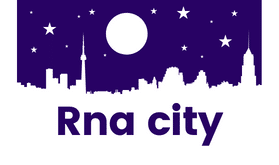In today’s digital era, a considerable amount of our time is spent gazing at screens of various devices. LED (Light Emitting Diodes) lighting, the source of illumination for these screens, emits a significant amount of blue light. It’s crucial to understand how continuous exposure to this type of artificial light affects our health. This article will explore the health effects of blue light from LED lighting on aspects like vision, sleep, and circadian rhythms.
Impact of Blue light on Vision
Blue light, a portion of the visible light spectrum, is known for its short wavelengths and high energy. This high-energy visible light (HEV) penetrates deep into the eye. This, in some cases, can lead to retinal damage. Let’s dive into the effects of blue light on our eyes.
Topic to read : Can Mindful Walking Practices Reduce Burnout in High-Stress Occupations?
Blue light exposure from LED lighting and digital devices can, over time, damage the eyes. The first part of the eye that blue light impacts is the cornea and the lens. While these parts of the eye effectively block most UV rays, they do not block blue light, allowing it to enter the eye. This is where the potential damage may occur.
Continuous exposure to artificial blue light can cause digital eye strain or computer vision syndrome. Symptoms include dry eyes, blurry vision, irritation, and eye fatigue. On a more severe note, there is a growing body of research suggesting that prolonged exposure to blue light could increase the risk of macular degeneration, a leading cause of vision loss.
In parallel : How Can Sensory Gardens in Urban Schools Support Children with Sensory Processing Disorders?
The Correlation Between Blue Light and Sleep
Our sleep and the light we expose ourselves to are interlinked. The nature of this relationship lies in our body’s circadian rhythm, a natural, internal process that regulates the sleep-wake cycle and repeats roughly every 24 hours. Blue light exposure, especially at night, can disrupt this rhythm.
Our bodies are sensitive to light and darkness. The exposure to light stimulates a nerve pathway from the eye to parts of the brain that control hormones, body temperature, and other functions that play a role in making us feel sleepy or awake. At night, blue light emission from LED lighting and screens suppresses the secretion of melatonin, a hormone that influences circadian rhythms and helps us sleep.
Exposure to blue light before bedtime can trick the brain into thinking it is still daytime, leading to difficulty falling asleep and decreased quality of sleep. This can further lead to sleep deprivation, which is linked to several health problems such as depression, cardiovascular disease, and cognitive dysfunction.
Blue Light and Circadian Rhythm Disruption
Our bodies have an intrinsic clock that commands our sleep-wake cycle, also known as the circadian rhythm. This rhythm is sensitive to changes in light, especially blue light. Let’s explore how blue light affects our internal clock.
The circadian rhythm can be significantly disrupted by blue light. When it’s dark, your body produces more melatonin. Conversely, when it’s light out, the production of this hormone decreases. However, the high energy from blue light can suppress melatonin production, making it harder for you to fall asleep at night.
Changes in sleep patterns due to such disruption can lead to sleep disorders like insomnia and daytime fatigue. In the long run, a disrupted circadian rhythm can cause serious health issues such as obesity, diabetes, depression, bipolar disorder, and seasonal affective disorder.
The Role of LEDs and Digital Devices
LEDs and digital devices have become an integral part of our lives, and their usage continues to grow. However, the high levels of blue light emitted by these devices have raised concerns about their health effects.
LEDs are used in various applications, from lighting our homes to illuminating the screens of our digital devices. While LEDs are energy-efficient and long-lasting, they emit a significant amount of blue light. Continuous exposure to this light, especially in the evening and at night, can disrupt our sleep and potentially cause damage to our vision.
Digital devices such as smartphones, tablets, computers, and televisions also use LED backlit displays, making them sources of blue light. Spending extended periods using these devices, particularly before bed, can lead to sleep disturbances and strain on our eyes.
Mitigating the Effects of Blue Light
While the effects of blue light can be concerning, there are several steps you can take to mitigate these effects. Here are a few recommendations to help lessen your exposure to blue light.
One of the simplest ways to decrease blue light exposure is to limit the use of digital devices, especially at night. For unavoidable usage, blue light filters for screens or wearing glasses with blue light blocking lenses can be helpful.
Adopting healthier digital habits can also make a big difference. Taking frequent breaks while working on digital devices, reducing screen brightness, and increasing text size can help prevent digital eye strain.
Finally, maintaining a regular sleep schedule and ensuring adequate natural light exposure during the day can bolster your circadian rhythm, thereby helping you sleep better at night.
In an increasingly digital world, it’s imperative to understand the potential health effects of blue light from LED lighting. Equipped with this knowledge, one can make informed choices about their exposure to blue light and adopt practices to mitigate its effects.
Long Term Health Risks of Blue Light Exposure
The potential effects of long term exposure to artificial blue light from LED lighting go beyond just eye health and sleep disruption. In fact, several recently published studies in scientific journals like Google Scholar have suggested a link between blue light exposure and a range of serious health conditions.
Blue light exposure has been associated with an increased risk of certain types of cancers. The suppression of melatonin by blue light, particularly at night, may lead to an increased risk of breast and prostate cancer. This is because melatonin has been found to have anti-cancer effects, and low levels of it at night might increase the risk of these cancers.
Furthermore, continuous exposure to blue light has been linked to obesity and diabetes. This connection may be due to the disruption of the circadian rhythm and sleep cycle, leading to poor quality sleep, which has been associated with these conditions.
Age-related macular degeneration (AMD), an eye disorder associated with ageing that can result in significant vision loss, has been linked to long term exposure to blue light. While the exact cause of AMD is not known, blue light may be a contributing factor due to its potential to damage the retina.
Moreover, researchers have found that blue light could potentially harm our skin cells. While these light sources do not emit UV light, and therefore do not cause skin cancer, exposure to artificial light might lead to premature skin aging.
Conclusion: Shedding light on Blue Light Exposure
In the digital world we live in today, exposure to blue light from LED lighting and digital devices has become an unavoidable part of life. However, continuous exposure to this type of light can potentially have a range of adverse health effects, including vision problems, sleep disorders, and even an increased risk of certain types of cancer.
It’s essential to be aware of the potential risks of blue light exposure and take steps to mitigate them. This includes limiting the use of digital devices, especially at night, using blue light filters or glasses, and maintaining a regular sleep schedule.
While the use of LED lighting and digital devices undoubtedly brings many benefits, it is crucial to balance these with the potential health risks. As we continue to rely on these technologies, more research will be needed to fully understand the long term health effects of blue light exposure. In the meantime, adopting healthier habits in relation to our use of digital devices and LED lighting can go a long way in protecting our health.
As the adage goes, prevention is better than cure. Armed with the knowledge of the potential health effects of blue light, we are better equipped to make informed decisions about our exposure to this type of light.











